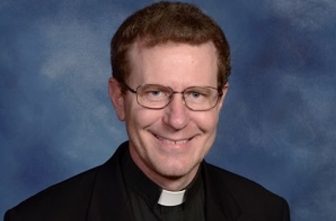 On Nov. 20, I traveled to Rome for a consistory of the College of Cardinals. It was a special event for me in more ways than one. Two of the 24 men named cardinals by Pope Benedict XVI are graduates of my institution, The Catholic University of America.
On Nov. 20, I traveled to Rome for a consistory of the College of Cardinals. It was a special event for me in more ways than one. Two of the 24 men named cardinals by Pope Benedict XVI are graduates of my institution, The Catholic University of America.
Most people know that the College of Cardinals elects the pope. But most do not know the origins of the college in a heated 11th-century dispute over the powers of church and state.
Although the church has always maintained the right to appoint the successors of Peter and the apostles, it has not always worked that way in practice. The temporal rulers of Christendom swiftly insinuated themselves into the process after the fall of the Roman Empire, creating constant church-state struggles and opportunities for simony and other forms of ecclesiastical abuse.
Church reformers sought to restore the integrity of the clergy and the church’s rightful power. They got their chance in 1056, when Henry III died and left the Holy Roman Empire to his 6-year-old son. Three years later, Pope Nicholas II created the College of Cardinals, wresting from the young emperor the right to choose the bishop of Rome.
Over the next 60 years, Pope Gregory VII and other reformers would challenge successive emperors — the young Henry IV, and then his son, Henry V — and eventually restore the church’s power over ecclesiastical appointments at every level.
Religious freedom
This was a significant step toward Western ideas of limited government and religious freedom: limited government because it recognized that there were parts of our lives the government did not control, religious freedom because it acknowledged that the church and its affairs are one of these parts.
These ideas were incorporated in the Establishment Clause of the U.S. Constitution. The popular press often misreads the clause as a directive to keep the churches out of civic affairs. But for many of the framers, it meant nearly the opposite — keeping the state out of church affairs.
Not every part of the world has enjoyed this development in human thinking, as the pope reminded us on Christmas Day, when he brought up the controversial subject of the church in China: “May the birth of the Savior strengthen the spirit of faith, patience and courage of the faithful of the church in mainland China,” he said, “that they may not lose heart through the limitations imposed on their freedom of religion and conscience but, persevering in fidelity to Christ and his church, may keep alive the flame of hope.”
The Chinese regime’s interference in the practice of the faith has been a continuing source of friction, but the pope was referring specifically to a recent event. On Nov. 20, the same day the pope elevated the new cardinals in Rome, the Chinese government (its president is Hu Jintao) conducted the ordination of Father Joseph Guo Jincai as bishop of Chengde without a pontifical mandate.
It also pressured a number of Chinese bishops to participate in the ordination, even though consecration without a pontifical mandate violates canon law and carries a penalty of automatic excommunication.
This is a new face on a very old problem, and it serves as a reminder that our duty to God is more important than even the obligations of citizenship.
James Madison, the author of our First Amendment, would have agreed. In his “Memorial and Remonstrance Against Religious Assessments,” he previewed for us the true meaning of the First Amendment: “It is the duty of every man to render to the creator such homage and such only as he believes to be acceptable to him. This duty is precedent, both in order of time and in degree of obligation, to the claims of civil society.”
John Garvey is the president of The Catholic University of America in Washington.




